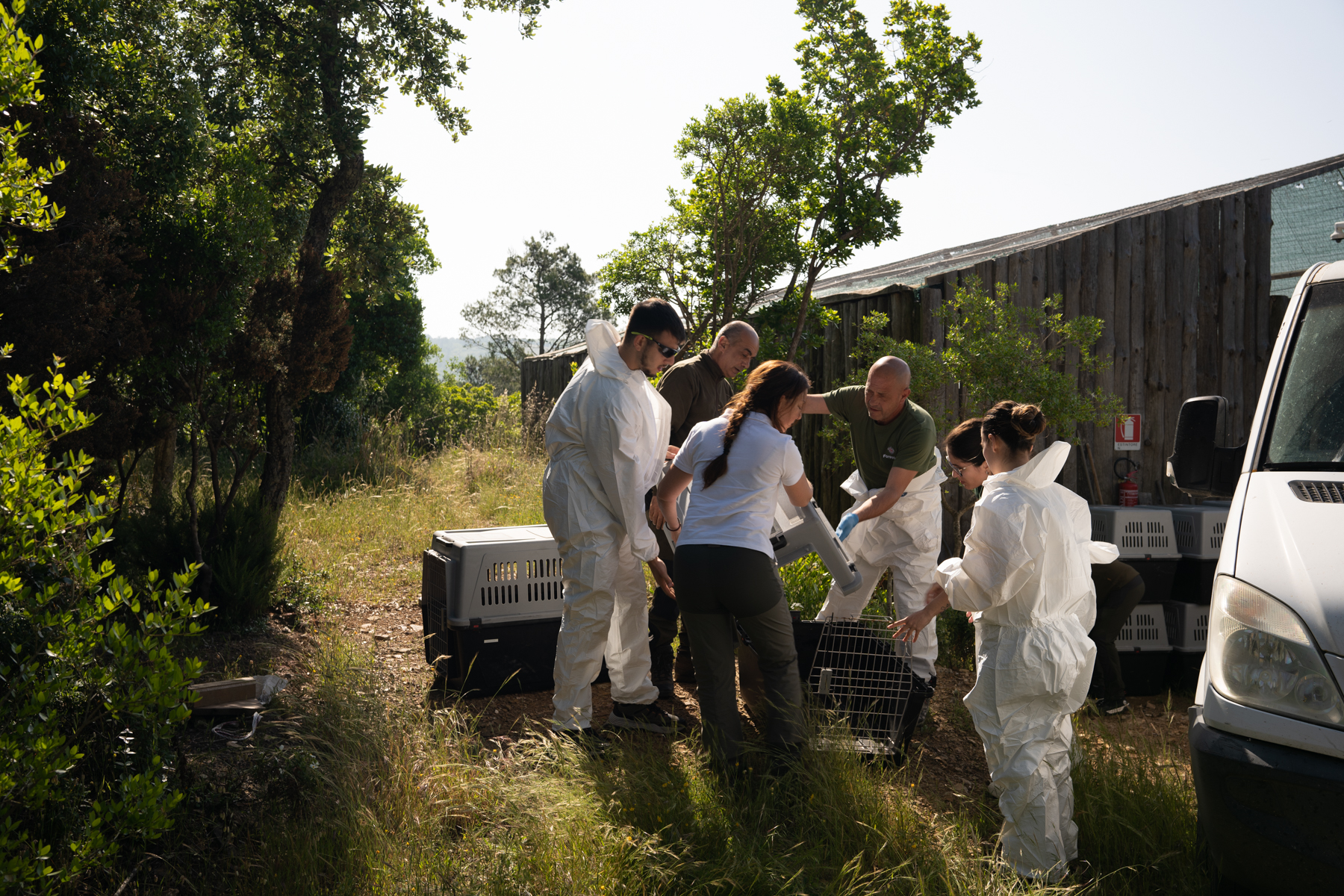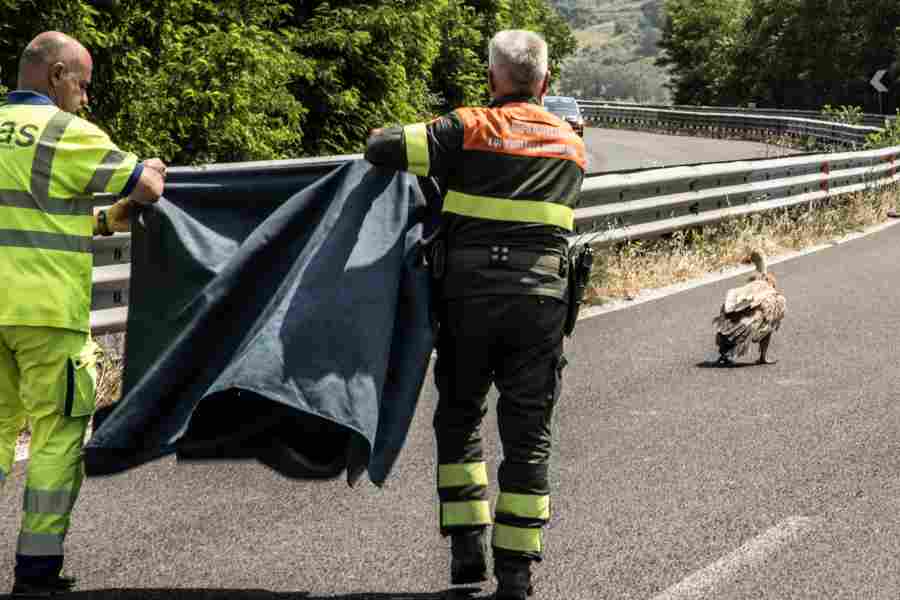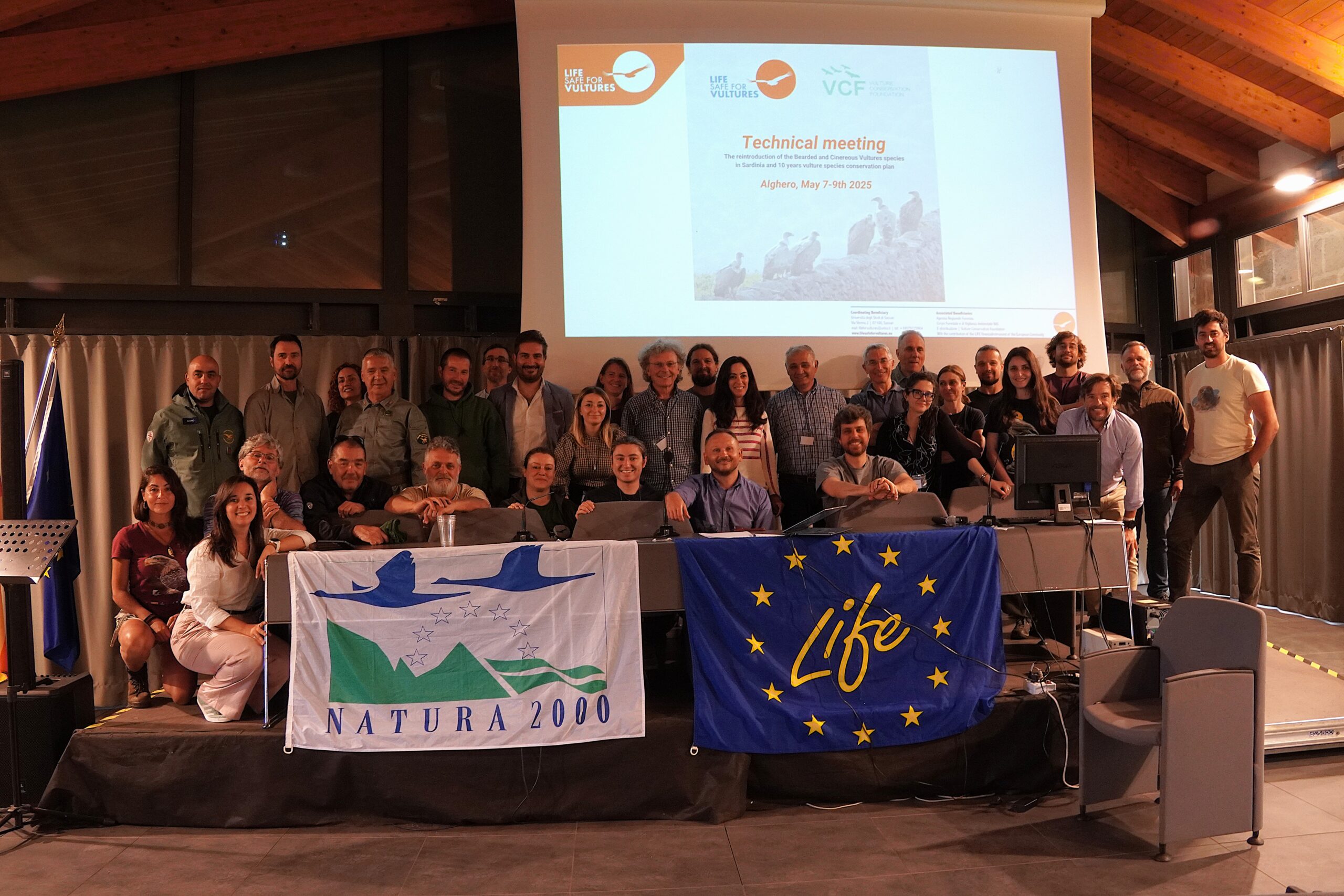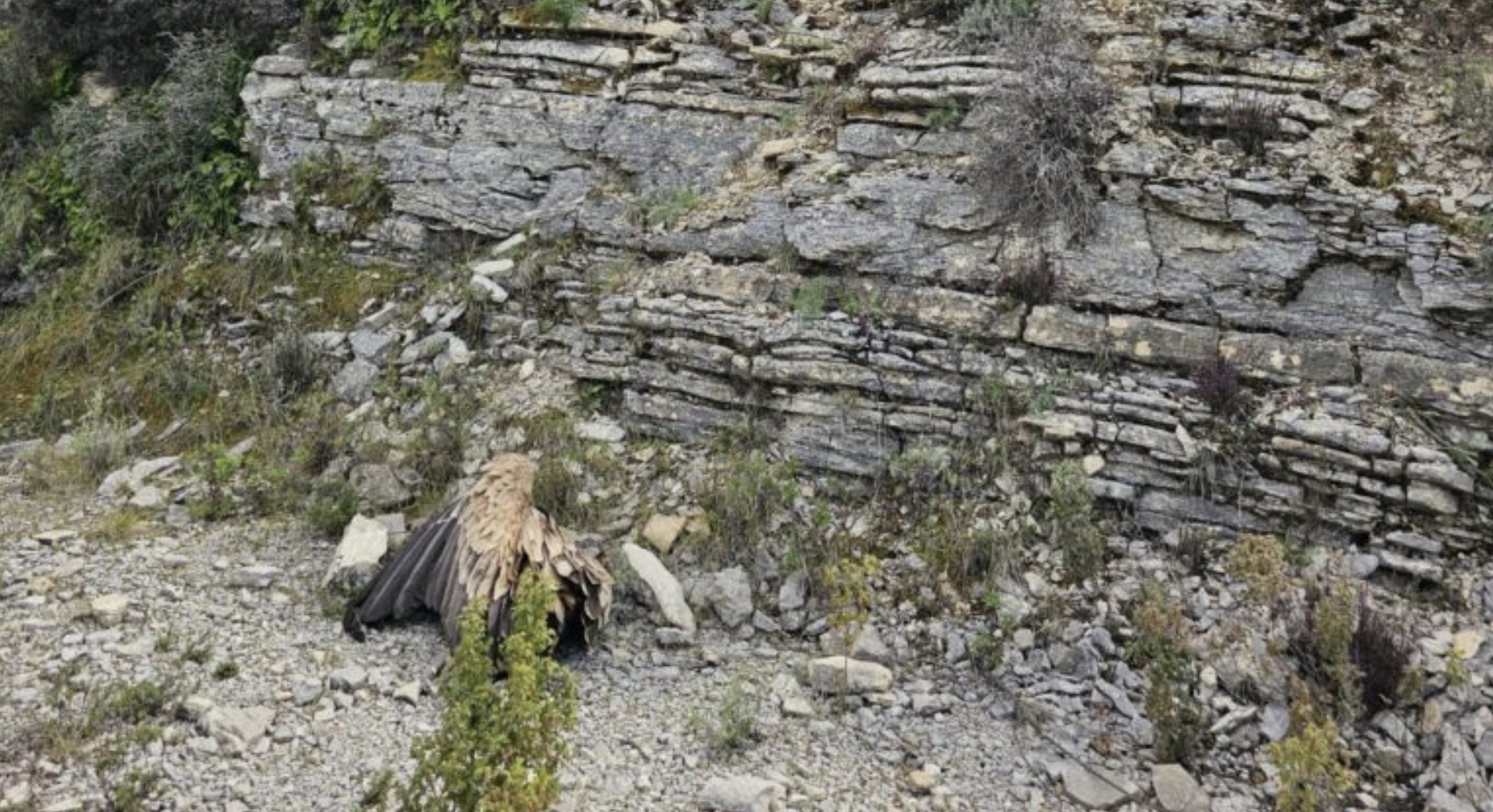
At least 7 of the 8 griffon vultures released in the LIFE Under Griffon Wings on the 14 April, and tagged with GPS transmitters, are doing fine. A total of 14 griffons vultures – 12 brought from rehabilitation centres in Spain by the VCF, and two captive bred in Artis Amsterdam Zoo – were released into the wild, to help restock the small Sardinian population. Read the story about their release here>>
Eight of these birds were equipped with GPS tags by VCF staff and colleagues from the university of Sassari, that will allow us to track the individuals, determine their foraging areas, check their survival and eventually identify mortality causes. Only one bird, Foradada, does not send regular GPS data and hence the project team does not exactly know her whereabouts. The other birds already started some interesting journeys – 5 birds flew south and found the main griffon vulture colony around Bosa. One bird, Barca flew even further to the east coast of Sardinia.
You can now follow the movements of all the birds in our website>>
Sardinia once had healthy populations of three vulture species – bearded, cinereous and griffon vultures, but human persecution, poisoning and other threats led to the extinction of the first two species, and to a very small population of the last (about 130 individuals).
In order to rescue the Sardinian griffon population from a critical demographic situation, a number of organisations got together to develop – and then implement, an ambitious project – LIFE under Griffon wings – that is trying to mitigate the main threats affecting griffons on this island.
The main actions of the project are
– to establish a network of farm feeding stations, managed by the livestock breeders themselves, which will guarantee a sustainable food supply to the vulture population – many of these are already working
– to establish an anti-poison dog unit and developing a communication actions to raise awareness on the threat caused by the illegal use of poisoned baits – this has indeed been done, and we see the first results
– restocking program: the release of 60 griffon vultures from Spain to resolve the critical demographic situation of the population – 40 vultures have already been transported to Sardinia by the VCF, and the first 14 were now released.
– mitigate human disturbance in the reproductive sites
– reinforce the local wildlife rescue centre by equipping it with the facilities needed for the rehabilitation of large vultures
The VCF supports this important conservation project which was developed by the University of Sassari in partnership with the Municipality of Bosa, the Forestry Agency and the Corpo Forestale di Vigilanza Ambientale. The project is implemented in collaboration with the regional Departments of Environmental Protection and Health, the Regional Natural Park of Porto Conte, the Instituto Zooprofilattico Sperimentale of Sardinia, and the VCF.



